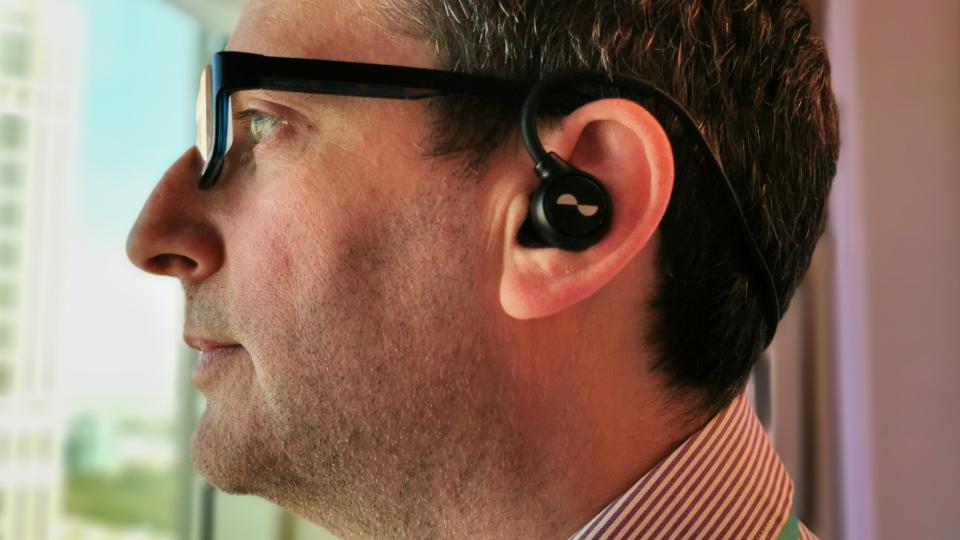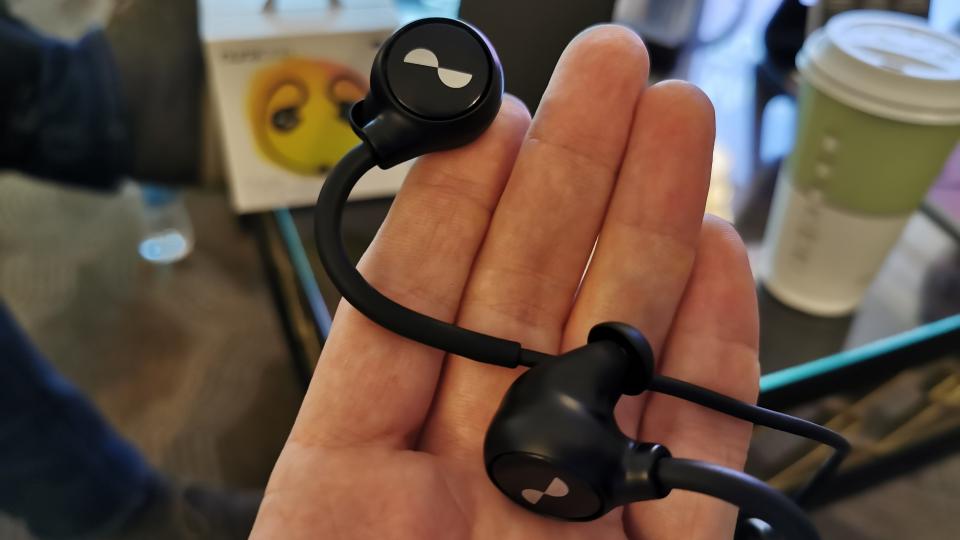
Personalised sound works excellently in these impressive in-ear Nura headphones
If you’re a music lover then chances are that you’ll already have heard of Nura. This Australian company detects the microscopic audio signals transmitted by your ears when they receive sound to create a personalised acoustic model, just for you. They then adapt the music beamed into your ears to boost the frequencies that need boosting and modulating the ones that don’t.
Since they were released in 2018, Nuraphone headphones have rapidly become the favoured choice of many musicians – Dragan Petrović, Nuraphone’s cofounder and CEO told me that Bjork, Will.i.am and Stevie Wonder are all fans. At CES 2020, the company is introducing its first earphones – the Nuraloops.
What you need to know about NuraLoops
- 16+ hours battery life
- Active noise cancellation
- aptX HD Bluetooth 5
- Sweat-resistant
- Customisable dial controls
- Social mode
- $199
- Pre-order now for April delivery
NuraLoop: First impressions
If you haven’t already bought a pair of Nura’s headphones, the first thing you’ll need to do is set up your profile. This takes a painless minute or two while you sit still and allow weird, semi-musical noises to flood into your ears. It’s easy.
As part of this process you’ll learn how to swivel the NuraLoops into your ears to fill the ear canal properly, and it’s as snug a fit as you’d expect. It always helps to have a loop to keep things secure (I’ve lost track of the number of times my loopless earphones have fallen out at the gym as I brush them with a towel).
As the photos of the NuraLoops in my ears hopefully show, they aren’t obtrusive either. You could wear these in the gym, at work or walking down the street without drawing attention to yourself.
NuraLoop: Taking control
A tap on the left bud activates “social mode”, which means you can hear what people are saying around you. We weren’t overly impressed with this mode in our review of the Nuraphones, with Jon declaring that you might as well just take them off, but either the app has improved or Jon is being fussy: I have no such complaints and could hear Petrović speaking clearly with social mode on.
Another plus point: you can take fine control of how much you hear of your surrounds by adjusting a dial-in via the app or by tracing anticlockwise or clockwise on the bud. It’s surprisingly intuitive.
The right bud controls volume by default, but all of this is customisable. Maybe you want to tap to shift to the next track or to pick up calls. It’s all in your control.
NuraLoop: Audio quality
With all the usual caveats about this being a first-look review rather than an in-depth test, colour me impressed. I gave the NuraLoops a rapid-fire run through my favoured test artists – The The, Bjork and Amon Tobin, since you ask – and they all sounded excellent.
Did I hear elements of the tracks that I’d never heard before? No, not yet. But there was a tremendous amount of clarity and detail that you just don’t get with normal earphones.
For the first time, I’m seriously tempted to upgrade from Spotify to Tidal so I can listen to the music in as high a quality as possible (note these earphones support aptX HD over Bluetooth 5). Previously, I’ve felt Tidal and its like are a waste of money unless listening through top-end audio equipment, but now… well, we’ll see.
One final note on active noise cancellation. Combined with the natural noise isolation that comes from stuffing earbuds down your ear canal, the NuraLoops appear to do ANC well. Again, that’s one aspect of the NuraLoops that we’ll have to test at a later point.
NuraLoop: Early verdict
There are so many wireless earphones out on the market that distinguishing between them is a Herculean task. Until we can test the NuraLoops properly it’s impossible to tell if they will usurp the Apple AirPods Pro at the top of the audio tree, but they have a decent chance.
They aren’t cheap but they are well-built, tick all the right audio-quality boxes and have a unique feature that no one else can match. We can’t wait until April to give them a proper test.

